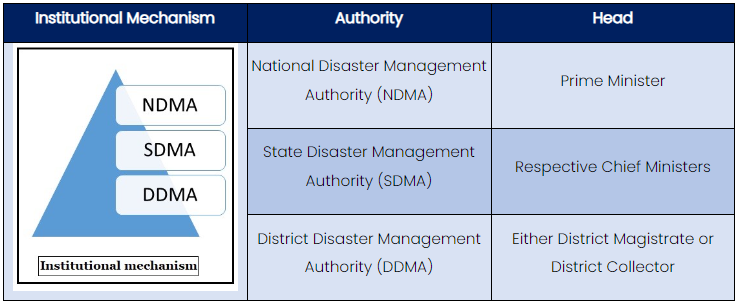Recently, the Disaster Management (Amendment) Bill, 2024 was introduced in Lok Sabha.

State Disaster Response Force (SDRF), a mechanism that is already in operation in several states like Odisha and Gujarat.
|
|
Existing provisions |
Bill provisions |
|
Disaster Management Plans |
|
|
|
Appointments to NDMA |
|
|
A delayed response was witnessed when the disaster relief funds from the NDRF were denied to Tamil Nadu and disbursed much later to Karnataka.
The current notified list of disasters eligible for assistance under the National Disaster Response Fund/State Disaster Response Fund are cyclone, drought, earthquake, fire, flood, tsunami, hailstorm, landslide, avalanche, cloud burst, pest attack, frost and cold wave.
The recent disasters such as labourers being stuck in the under construction in Silkyara tunnel or the landslides in Wayanad, have both brought to the fore the importance of coordination in disaster governance.
What lies ahead?
References